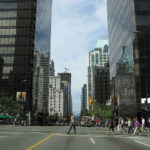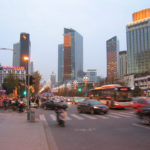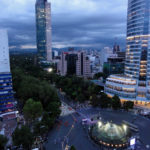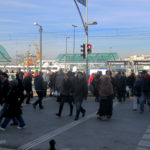Posts in the 'Urban Development' category
A focus on sustainable development can help Istanbul preserve its rich cultural history. For example, Istanbul’s Historical Peninsula – a UNESCO World Heritage site – contains 295 pedestrianized streets that have helped to increase the vibrancy, safety, and accessibility of ...

Last week, cities around the world made bold commitments to confront climate change. The Compact of Mayors, announced at the UN Climate Summit in New York City, convenes cities to set ambitious targets and report their performance transparently. It builds ...

Three billion hours per week are spent playing online games worldwide. Though the prevalence of online games has drawbacks, what if some of this time spent gaming could improve the way our cities are designed? The prevalence of games in ...

The concept of smart, connected transport is a hot topic among city leaders looking to ride the wave of innovation to more sustainable, prosperous cities. Despite this, building a truly smart and interconnected urban transport system is more than most ...

Climate action often focuses on energy and industrial activity, but the transport sector must be included to keep global warming below the dangerous two-degree scenario. Transport is responsible for 22% of energy-related greenhouse gas (GHG) emissions worldwide, and its emissions ...

No strategy for reducing the impacts of global climate change is complete without addressing the challenge of urbanization. Cities contribute about 70% of energy-related greenhouse gas (GHG) emissions, despite only accounting for 2% of global land area. Reducing this environmental impact may ...

By 2050, the world’s population is estimated to grow to 9.6 billion, with 66% living in cities. How can we accommodate urbanization while avoiding costly urban sprawl that can lead to unequal access to transport and increased greenhouse gas emissions? ...

The NYU Stern Urbanization Project has created a number of fascinating time-lapse videos showing urban land use in different cities from the 1800s through to 2000. These videos strikingly depict the well-evidenced trend of urban growth, both in population and ...

Pedestrians hit by vehicles when crossing on red are 56% more likely to be severely injured than those crossing on green. While crossing on red is often assumed to be mainly an issue of poor individual pedestrian behavior, recent research ...

Every morning for the last six months I have observed the same man parking his car in the handicap spot. At first, I flashed him angry and annoyed expressions to try to convince him to park somewhere else; no results. ...

How can we ensure that all urban inhabitants have the necessary rights and conditions for a dignified and secure existence in the city? As the world rapidly urbanizes, the livelihoods, health, and safety of residents living in informal settlements remain ...

Here at TheCityFix, we love exploring the latest, most breathtaking innovations in sustainable urban development. And for good reason! Measures like São Paulo’s citizen hackathons, Medellín’s aerial cable cars, glow-in-the-dark road markings, and Hamburg and Helsinki’s plans for car-free mobility ...

The informal economy is often referred to as the “shadow economy,” a glaring indicator of its absence from the eyes of policymakers. As discussed on TheCityFix, street vendors are frequently ignored in surveys of jobs and economic productivity, despite their ...

Ljubljana, Slovenia has won the 2016 European Green Capital Award, given annually by the European Commission to cities that set an example of sustainable urban development best practices. With an ambitious sustainability plan and that has led to significant improvements in the ...

In 2004, Medellín – the second largest city in Colombia – introduced the Medellín Metrocable system to connect low-income residents to public transport. As the world’s first modern urban aerial cable car transport system, this innovative addition to Medellín’s existing ...

Page 21 of 56« First...10...202122...3040...Last »























